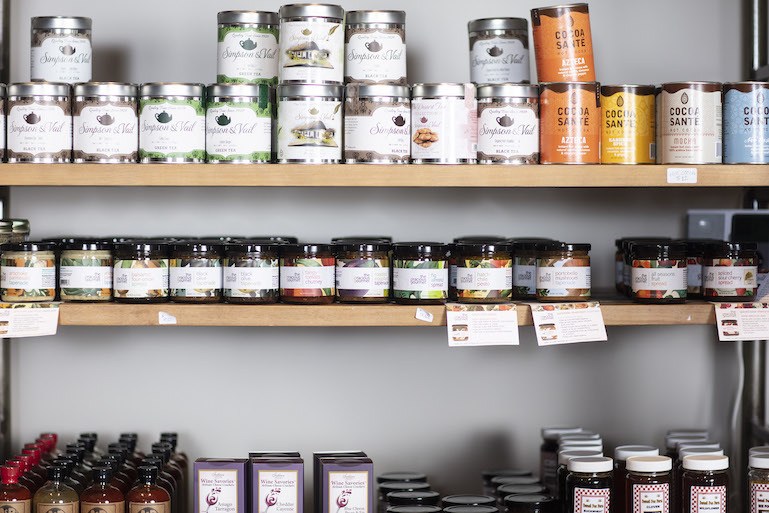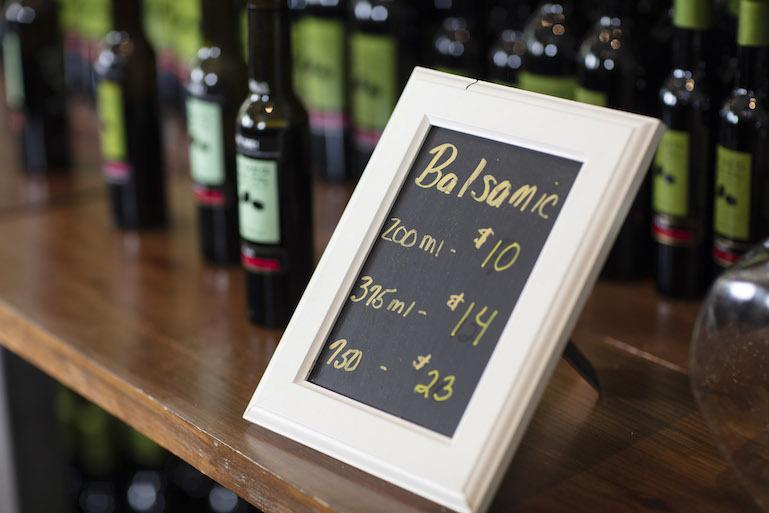
How to Price Wholesale Inventory
Finally, your shipment arrived from the wholesalers! To the owner of an independent retail store, a new batch of wholesale inventory is like the first day of school: exciting with a side of anxiety.
Knowing how to price each product for your customers is a challenge for even experienced retailers, but there are certain criteria that can help you price products so they sell. “The goal is to price your product high enough where you can make a decent profit,“ says successful boutique owner Alli Schultz. “Yet not too high where it’s going to scare away all of your customers.”
Watch the video below to learn how Alli prices inventory at her boutiques.
As Alli explains above, there are a few strategies you can use that will help you know how to price your wholesale inventory so it sells. Let’s take a high-level look at the most common ones.
How Is Wholesale Inventory Priced?
Wholesale inventory is inventory that retailers purchase from wholesalers (aka publishers or manufacturers) and then sell in order to make a profit. The manufacturer’s suggested retail price (MSRP) or recommended retail price (RRP) is set by the wholesalers, who sell their inventory to the retail store for around 50% of the RRP. The retailer (that’s you) then marks up the inventory accordingly and sells it to make a profit.
After buying your inventory, there are a variety of pricing strategies you can use to determine product pricing for retail, including keystone pricing, cost-based pricing, bundle pricing, loss-leading pricing, and competition pricing.
SEE ALSO: Pricing 101: How to Price a Product for Retail
Keystone Pricing
Keystone pricing is the rule of thumb for retail and often the goal. It’s achieved by taking the wholesale cost per unit from your distributors and doubling it to reach the retail price. So if a shirt cost $4 to buy from the manufacturer, you would then use a 100% markup percentage and sell it for $8 in your store.
The benefit of the keystone pricing method is that the suggested retail price provides a nice round number around which to calculate your profit margin. The downside is that this price isn’t always feasible, and it doesn’t factor in variables like the cost of running retail stores in different regions.

Cost-Based Pricing
Keystone pricing is an example of a cost-based pricing method, which is choosing a price that results in a profit margin high enough to cover your fixed and variable costs of doing business: your rent, your electricity, the hourly rate you pay your employees, etc. This method is primarily based on your individual business costs and based less on what your retail competition is charging.
Bundle Pricing
Bundle pricing is an appropriate method for certain industries. In fact, a la carte pricing generally gives the advantage to the buyer, and bundle pricing favors the seller (that’s you), so you may want to experiment with this strategy.
Unbundled pricing is generally more transparent. But when you bundle your complementary stock and sell items together as packages, you are providing quality customer service, and often a bundle is perceived as a discount by the customer. This strategy is common among service providers (you probably bought a cable bundle) but with a little creativity, bundle pricing can be applied to any market.
Loss-Leading Pricing
Did you know that Amazon loses money on every Kindle they sell? However, the gadgets drew customers to Amazon as it amped up its online store, and continue to serve as a gateway for e-book purchases. In the end, even though each Kindle costs more to make than its retail price, the boost the product provides to Amazon’s bottom line justifies the negative profit margin.
This is an example of loss-leading pricing. This aggressive method is often used to beat a competitor at their own game, and only works if you have a very robust market and pricing strategy in place.
Competition Pricing
This is exactly what it sounds like. Competition pricing strategy bases price around what the competition is choosing for a certain price. It’s often used for key products by grocers — you don’t want to charge more for milk than the store down the street — but can be hard to follow consistently for every product you sell.
Additional Pricing Criteria
As Alli mentions in the video above, there are other variables to take into consideration when you are pricing your products.
Customers tend to spend more on certain types of products, like outerwear, so you can mark those up more than, say, a t-shirt. The location of your shop also matters. If you’re based in an area with lots of tourists, those customers may be willing to spend more than locals. A store in a high-income area like Beverly Hills is able to charge more for a product than the same type of store in a small Texas town. If you’re selling a name-brand product, you can generally charge more than you can for its generic equivalent.
These variables are collectively known as value perception, and it’s where the art of pricing comes in. If you price your stock on math alone, you’re losing out on profits derived from the quirks of human nature.
SEE ALSO: How To Know If You’re Underpricing Your Products
Software Can Help
Pricing wholesale inventory can be hard, but the right point of sale (POS) software can help. A robust POS like ShopKeep gives you automatic insights about which products are (and aren’t) selling in your store, so you can adjust your price level accordingly. Many of the pricing strategies above, like Keystone, were developed before the advent of POS systems.
Now retailers like you don’t have to rely on one or two or three strategies, or stock-based estimates like the Retail Inventory Method (also known as the cost-to-retail percentage). Your POS should automate your inventory management so you have a perfect view of your merchandise situation. Then you can analyze your own sales data and develop a unique pricing strategy that works for you.
Want to try ShopKeep for yourself?
Just answer a few easy questions.
Need help finding the right point of sale?
Just complete the form. We’ll call you right back to explain how ShopKeep can work for you.
Hit the ground running.Sprinting, in fact!
Read our free, comprehensive guide, Small Business 101, to learn all you need to know about starting a thriving business.

